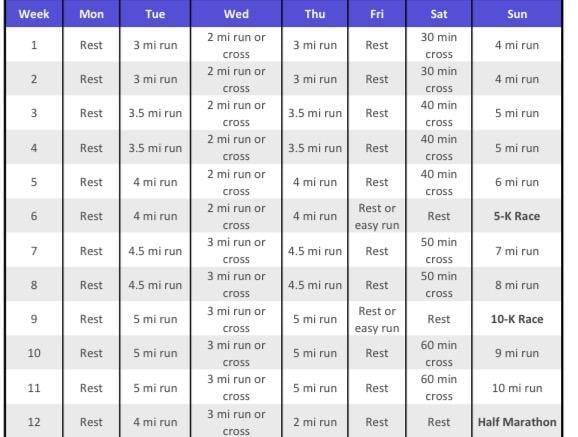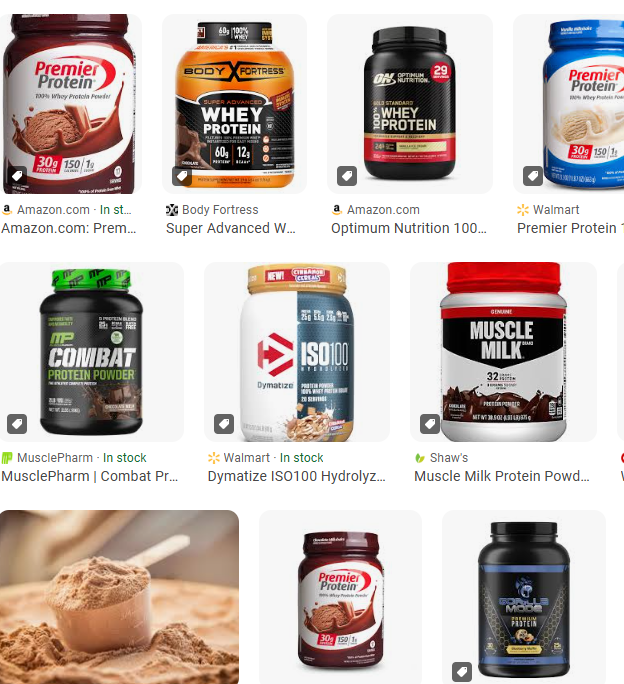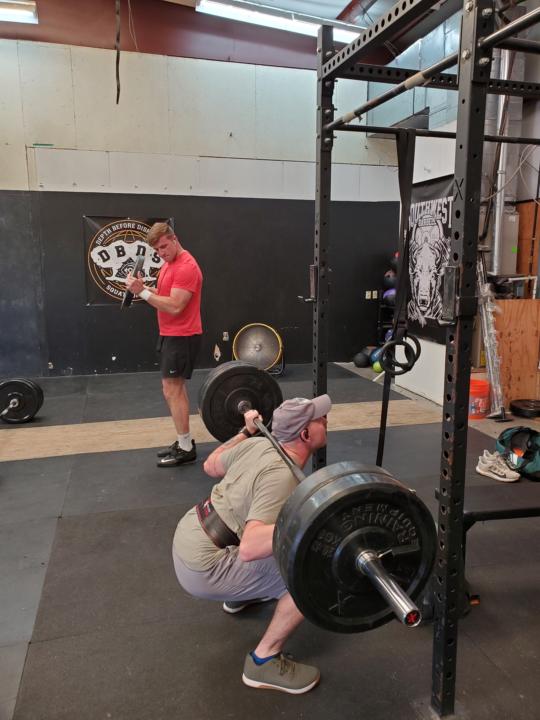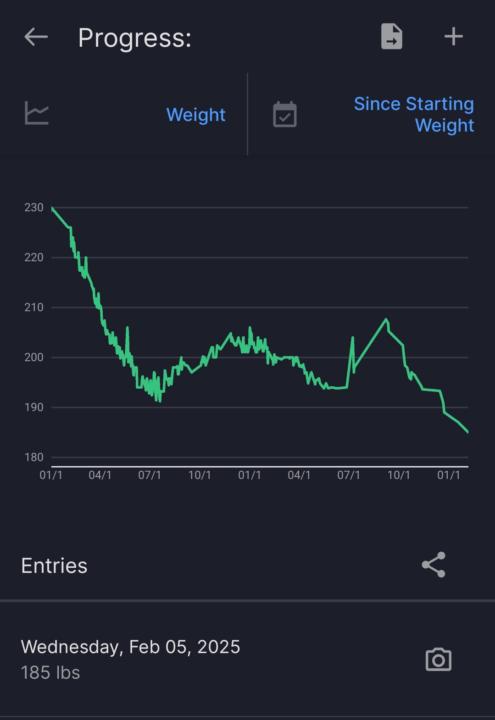
Write something
Pinned
A Comprehensive Guide to Running: Train Smarter, Run Faster, and Stay Injury-Free
For years, I struggled with running—pushing through shin splints and other injuries. Like many, I was told to just “run faster and harder,” which only led to more pain. But when I discovered the MAF180 Method, everything changed. Suddenly, I was running injury-free, enjoying the process, and improving my endurance without the pain I once thought was inevitable. The MAF180 Method, developed by Dr. Phil Maffetone, focuses on training your body to burn fat for fuel rather than carbohydrates. By doing this, you build a stronger aerobic base that allows you to run further, faster, and longer—without injury. Let’s dive into how you can use this method to transform your running! What is the MAF180 Method? The MAF180 Method centers around running at a controlled heart rate that keeps you in your maximum aerobic zone. This means running at a pace where your body is burning fat as its primary fuel source. Over time, this builds endurance, improves efficiency, and prevents injuries. The key here is that you have to run slow to run fast. By staying in this heart rate zone, you're avoiding the stresses and breakdowns that happen when you push yourself into anaerobic zones too often. How to Calculate Your MAF180 Heart Rate To find your target heart rate (HR), follow these steps: 1. Start with the number 180. 2. Subtract your age from 180. For example, if you are 40 years old, you would calculate 180 - 40 = 140 beats per minute (bpm). 3. Make adjustments based on your health and fitness level:Subtract 10 if you're recovering from illness, surgery, or have a major health issue.Subtract 5 if you’ve been injured, are inconsistent in training, or are just getting back into it.No changes if you’ve been training consistently for up to two years without major issues.Add 5 if you’ve been training consistently for more than two years without injuries or setbacks. Your result is your maximum aerobic heart rate—the HR you should not exceed during your runs. This is where your body will efficiently burn fat for fuel and build a solid aerobic base.

Pinned
10-Week Push/Pull Hypertrophy Training Program
"If you want to burn more fuel, you need to build a bigger engine" or more appropriately here, "If you want to burn more fat, you need to build more muscle." Many of you just need a basic starting point to get into the gym and have a quick workout that can still help you gain muscle, and burn fat. This program is that starting point! You'll be able to see progress monthly! This program is designed for hypertrophy using progressive overload and percentage-based training. You’ll max out on Week 1, load progressively over 4 weeks, then retest your 1RM in Week 5, followed by another 4 weeks of progressive loading and a final max-out in Week 10. If followed appropriately with adherence to rest period timeframe these workouts should complete between 30-45 minutes. Tips for Success: - Rest Periods: 60-90 seconds between sets for hypertrophy. - Progressive Overload: Increase the weight progressively while maintaining good form. - Form Focus: Pay close attention to your form to avoid injury and maximize muscle activation. - Nutrition: Ensure you consume enough calories and protein to support muscle growth. Week 1: Max Testing Week (Find 1RM) Note- During Max week, I recommend resting 2 days in between Maxes. Perhaps Do day 1 on Monday and then Day 2 on Thursday. This will allow your central nervous system to recover from the exertion and give you the best chance at your best lift. Day 1: Push Day - Bench Press: Warm up, then work up to 1-rep max (1RM) - Squats: Warm up, then work up to 1RM - Military Press: Warm up, then work up to 1RM - Tricep Extensions/Press: 3 sets of 8-10 reps Day 2: Pull Day - Deadlifts: Warm up, then work up to 1RM - Bent-Over Rows: Warm up, then work up to 1RM - Bicep Curls: 3 sets of 8-10 reps - Calf Raises: 3 sets of 12-15 reps Weeks 2-5: Progressive Loading (Percentages of 1RM) NOTE: I recommend performing each day twice in a given week. For example, Monday Push, Tuesday Pull, Wednesday active recovery (walk/yoga/etc), Thursday Push, Friday Pull, Weekend Rest/active recovery.
The Power of Protein: Your Secret Weapon for Fitness Success
If you're new to fitness, here's a game-changing tip: focus on your protein intake! While many beginners obsess over workout routines, they often overlook what happens in the kitchen. Your body needs adequate protein to repair and build muscle after exercise—typically 0.8-1g of protein per pound of body weight daily. Make protein the star of each meal with foods like chicken, fish, eggs, Greek yogurt, beans, or protein shakes. This simple change will fuel your recovery, reduce soreness, and help you see results faster than exercise alone. Remember: Your workouts break down muscle, but proper nutrition rebuilds it stronger. No matter your fitness goals—whether building muscle, losing fat, or improving overall health—prioritizing protein is one of the smartest moves you can make. #FitnessNutrition #BeginnerFitnessTips #ProteinMatters
1
0

Train to Your Current Capability, Not Your Ego
The most important thing beginners need to know about strength training isn't about which exercises to do or even proper form (though those matter). It's about understanding the "training to failure" principle—but applying it correctly. When you're just starting out, it's tempting to load up the bar or grab heavy weights to impress others or yourself. But true strength is built by challenging your muscles appropriately, not overloading them prematurely. Train just shy of failure—where you can complete all prescribed repetitions with good form, but the last 2-3 reps are genuinely challenging. This approach builds a foundation of strength while minimizing injury risk. Remember: The strongest people in the gym started somewhere too. They built their impressive strength through consistent, appropriate progressive overload—not by maxing out on day one. #StrengthTraining #BeginnerFitness #TrainSmart
1
0

How I Dropped Nearly 50 Pounds by Tackling the Biggest Fitness Obstacle: Overeating
Can I share my struggle and successes with you? I wanted to share my journey of losing nearly 50 pounds, as shown in the progress chart I’ve attached, and the key lesson I learned along the way: overeating is the biggest obstacle most people face in their fitness journey. It’s not about grueling workouts or extreme diets, it’s about understanding what’s on your plate. When I started back in 2023, I weighed 231 pounds. By focusing on eating less and tracking my macros, I’ve gotten down to 185 pounds. The chart shows the steady downward trend, and I’m proud of the consistency. Here’s how I did it—and how you can overcome the overeating trap too. The truth is, most of us overeat without even realizing it. Portion sizes have ballooned over the years, and it’s easy to consume far more calories than our bodies need. A single extra slice of pizza or a mindless snack while watching TV can add hundreds of calories to your day. Over time, those calories stack up, leading to weight gain or stalled progress. For me, the game-changer was tracking my macros—protein, carbs, and fats. By logging everything I ate, I became aware of just how much I was overeating. I used a simple app to keep tabs on my intake, aiming for a calorie deficit while ensuring I got enough protein to preserve muscle. I also made a conscious choice to eat less overall. This didn’t mean starving myself—it meant being intentional. I focused on nutrient-dense foods like lean meats, veggies, and whole grains that kept me full longer. I cut back on processed snacks and sugary drinks, which were sneaking in empty calories. Tracking macros helped me balance my meals so I wasn’t left feeling deprived, but I was still eating less than I used to. One surprising thing I did was work out less. I know that sounds counterintuitive, but hear me out. Intense workouts can ramp up your hunger, making it harder to stick to a calorie deficit. Instead of daily sweat sessions, I prioritized lifting weights at least twice a week to maintain muscle mass. This kept my metabolism humming without triggering the kind of hunger that leads to overeating. On other days, I stayed active with light walks, but I didn’t push myself to the point of ravenous hunger.
0
0

1-30 of 42

skool.com/rounds-complete-fitness
Master your fitness and confidence with expert coaching, workouts, nutrition tips, and accountability—all tailored for driven leaders. Join today!
Powered by
